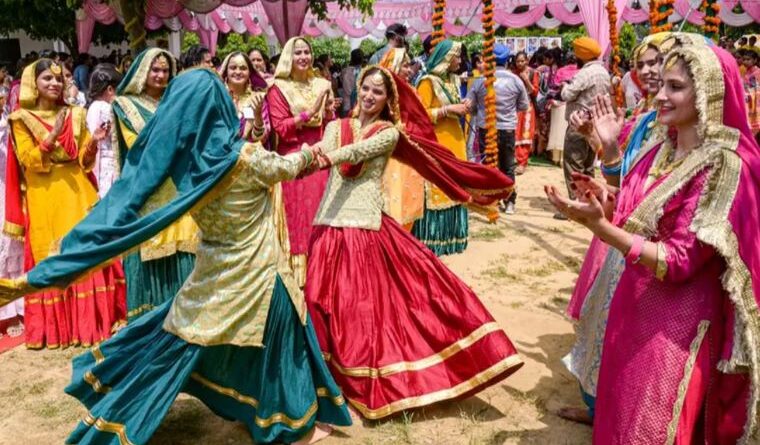Why Is Teej Celebrated?
Every year, women across India and Nepal come together to celebrate Teej, a vibrant festival filled with color, tradition, devotion, and deep-rooted cultural values. But what is the significance behind this beautiful celebration? Why is Teej celebrated, and what does it mean for the millions who observe it?
Let’s dive into the spiritual, cultural, and emotional depth of this powerful festival.
What Is Teej? A Quick Overview
Teej refers to a series of Hindu festivals celebrated mainly by women in parts of North India (especially Rajasthan, Uttar Pradesh, Bihar, and Haryana) and Nepal. It usually falls during the monsoon season (July to September) and includes Hariyali Teej, Kajari Teej, and Hartalika Teej.
Each type of Teej is marked by fasting, prayers, music, dance, and rituals that honor Goddess Parvati and Lord Shiva, symbolizing marital harmony, fertility, and devotion.
Why Is Teej Celebrated?
1. To Honor the Union of Lord Shiva and Goddess Parvati
The central spiritual reason for celebrating Teej is to commemorate the reunion of Lord Shiva and Goddess Parvati.
According to Hindu mythology:
- Goddess Parvati undertook intense penance and fasting for 108 births to win Lord Shiva’s love and approval.
- Pleased with her unwavering devotion, Lord Shiva finally accepted her as his wife.
- Their sacred union is seen as the epitome of marital love, spiritual unity, and feminine strength.
Teej celebrates this divine love story, making it an occasion where women pray for a happy, loving, and long-lasting marriage.
2. To Pray for Marital Bliss and a Good Husband
- Married women observe fasts and perform rituals on Teej to seek blessings for the well-being, longevity, and prosperity of their husbands.
- Unmarried girls fast and pray with the hope of finding a loving and caring life partner, just as Parvati found Shiva.
In essence, Teej becomes a spiritual renewal of vows, built on love, devotion, and self-sacrifice.
3. To Celebrate Womanhood, Strength, and Tradition
Teej is also a celebration of feminine energy and community bonding.
- Women dress in bright red, green, or orange saris, apply mehendi (henna), and wear bangles and ornaments.
- They gather for folk songs, dances, and storytelling, passing down traditions and celebrating shared experiences.
In doing so, Teej becomes a festival of sisterhood, of shared rituals, stories, and joy.
4. To Welcome the Monsoon Season
In agrarian societies, the monsoon is a symbol of renewal, fertility, and prosperity.
- Hariyali Teej, the first of the series, literally means “Green Teej” and is associated with the blooming of nature after the dry summer.
- Swinging on decorated jhoolas (swings) hung from trees is a common tradition, reflecting the celebration of rain, crops, and joy.
Thus, Teej also symbolizes gratitude for nature, hope for a good harvest, and the beginning of a new cycle of life.
5. To Practice Self-Discipline and Spiritual Growth
The fasting observed during Teej is extremely rigorous:
- Many women go without food or even a drop of water for an entire day and night.
- The fast is considered a test of endurance, self-control, and devotion, mirroring Parvati’s penance.
This act of spiritual discipline is believed to bring inner strength, peace, and divine blessings.
Types of Teej and Their Unique Significance
Hariyali Teej
- Celebrated in the month of Shravan (July-August).
- Focuses on marital happiness and is especially popular in Rajasthan and Punjab.
- Marked by vibrant attire, swings, songs, and dances.
Kajari Teej
- Celebrated about 15 days after Hariyali Teej, mainly in Uttar Pradesh and Bihar.
- Women sing folk songs called “Kajris” under moonlit skies.
- It is closely linked to the health and prosperity of one’s husband.
Hartalika Teej
- Observed a day before Ganesh Chaturthi, mostly in Nepal, Maharashtra, and parts of Bihar and MP.
- It marks the day Goddess Parvati was taken by her friend into the forest (Hartalika = abducted by a female friend) to escape an unwanted marriage and pray for Lord Shiva.
How Is Teej Celebrated?
- Morning Puja: Women perform ritual worship of Goddess Parvati and Lord Shiva.
- Fasting: Devotees observe a strict nirjala vrat (fast without water).
- Swing Rituals: Colorfully decorated swings are set up in gardens, symbolizing joy and nature’s rhythm.
- Songs and Dances: Traditional songs celebrate love, separation, longing, and divine devotion.
- Gifts and Sweets: Women exchange **“Sindhara”—a gift hamper of sweets, clothes, and cosmetics—**from their parents’ home.
The Modern Meaning of Teej
Today, while Teej continues to honor tradition, it also:
- Serves as a celebration of feminine strength and resilience.
- Offers a platform for women’s voices and cultural expression.
- Encourages the preservation of folk art, customs, and oral histories.
- Acts as a reminder to cherish relationships, values, and nature in a rapidly changing world.
Conclusion: A Festival Beyond Rituals
Teej is more than just a festival—it’s a spiritual journey, a cultural statement, and an emotional celebration. Whether it’s about honoring a sacred union, praying for love and harmony, or simply celebrating the beauty of tradition and womanhood, Teej brings generations of women together in a beautiful blend of devotion and joy.
So when you see women dressed in bright colors, swaying on swings, fasting with faith, and singing songs of love and longing—you’re witnessing not just a ritual, but a vibrant tribute to the soul of womanhood and the power of devotion.
Wishing everyone a blessed and joyful Teej!
Let me know if you’d like a short version, Instagram captions, or visuals to accompany this for social media or blogs!

